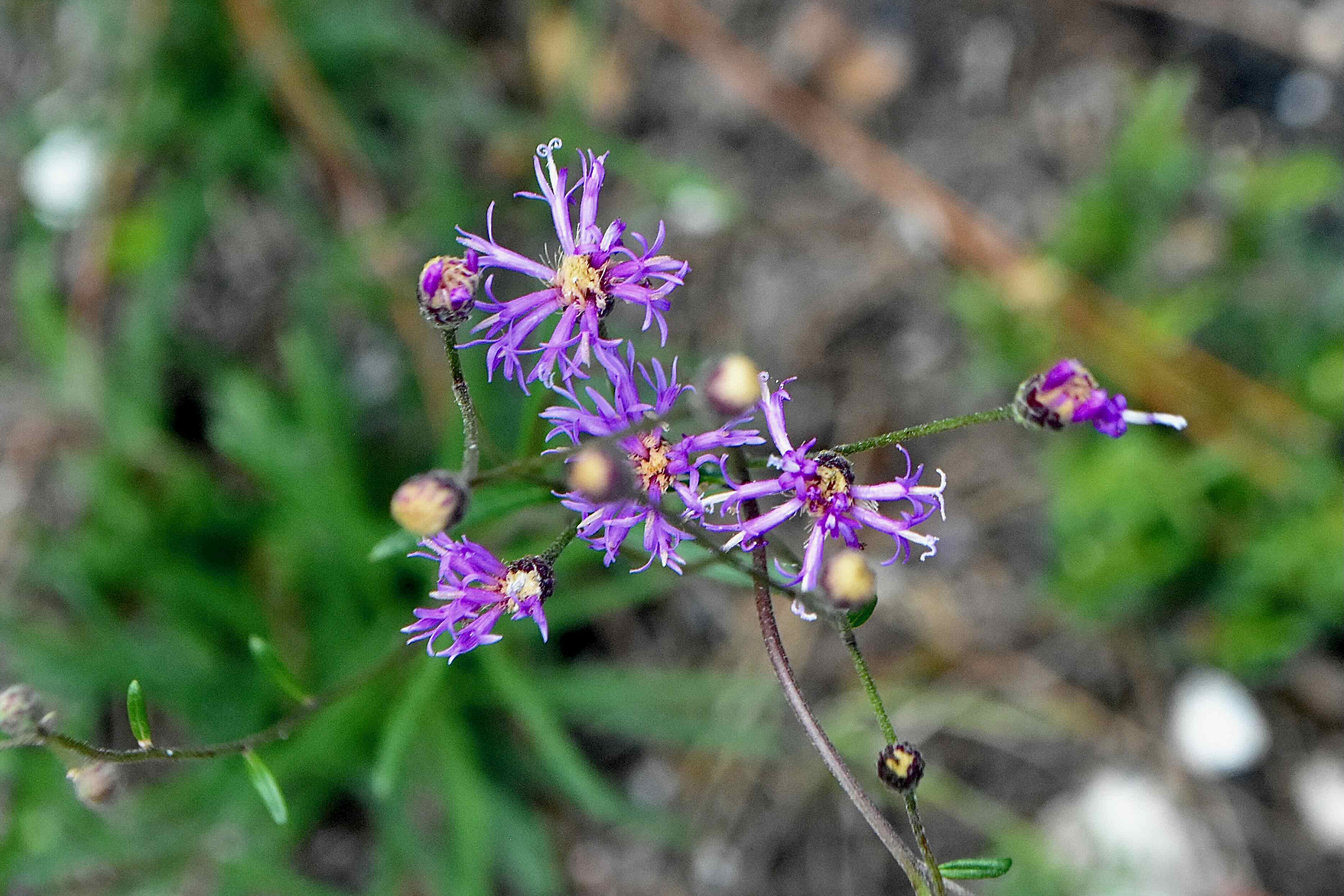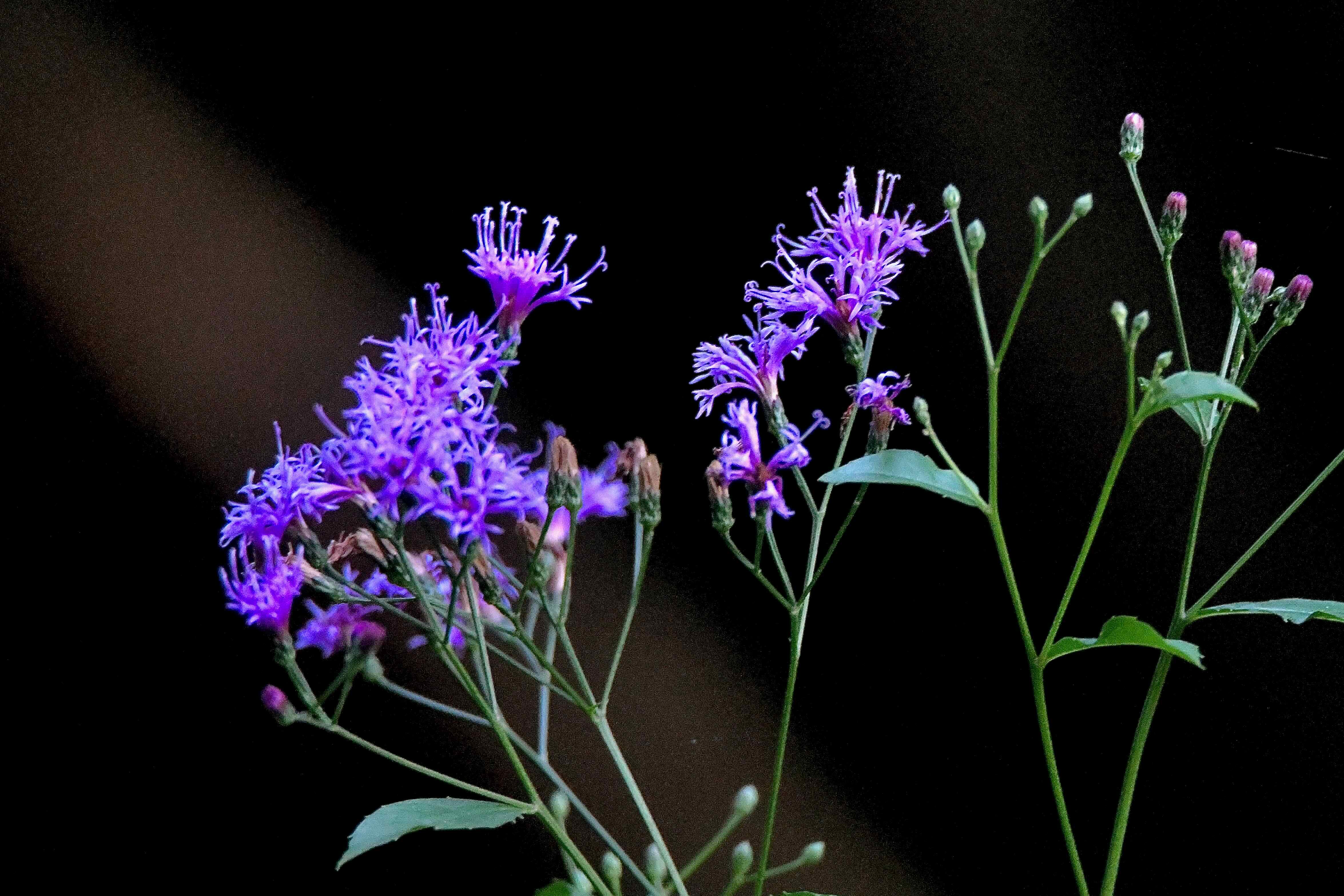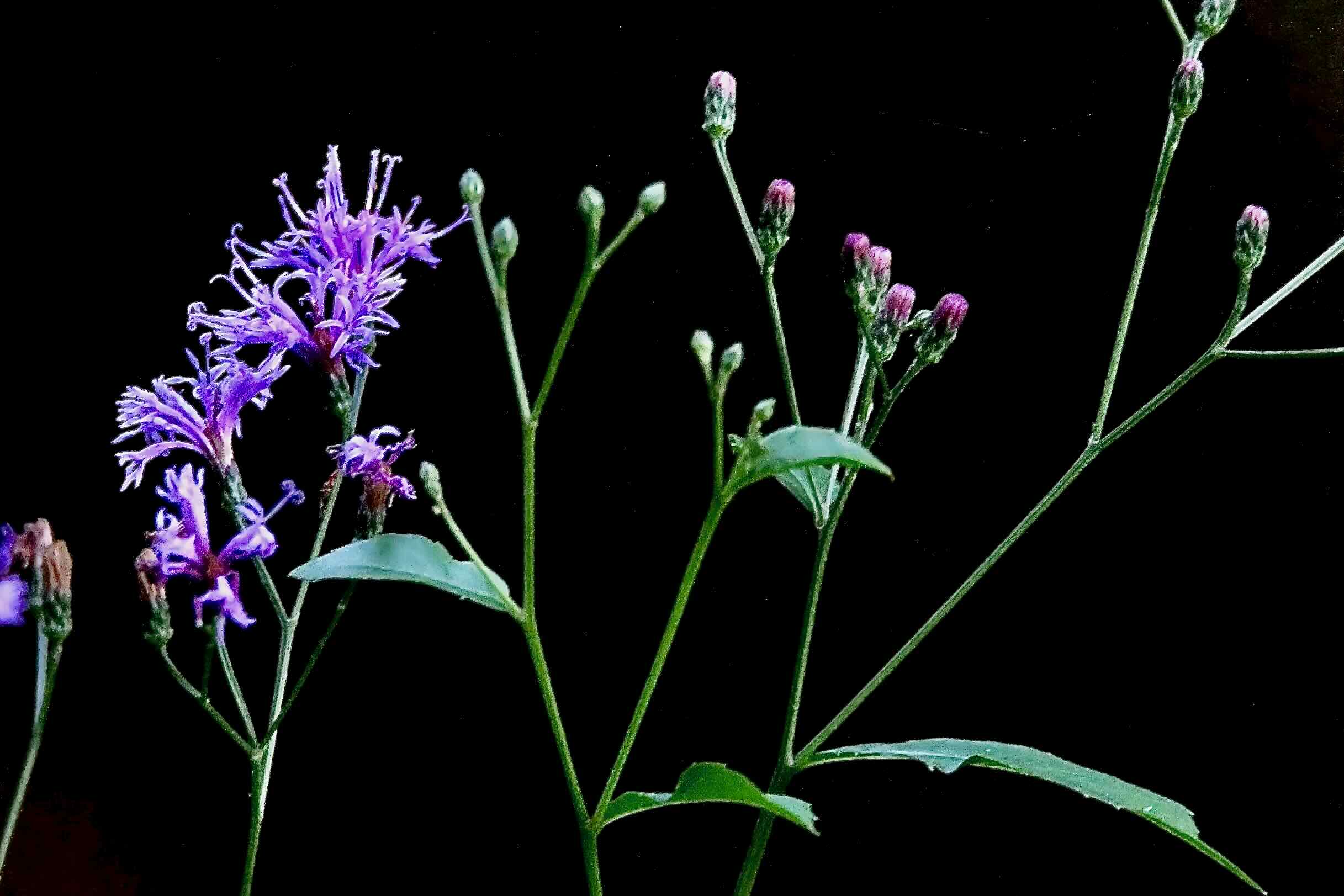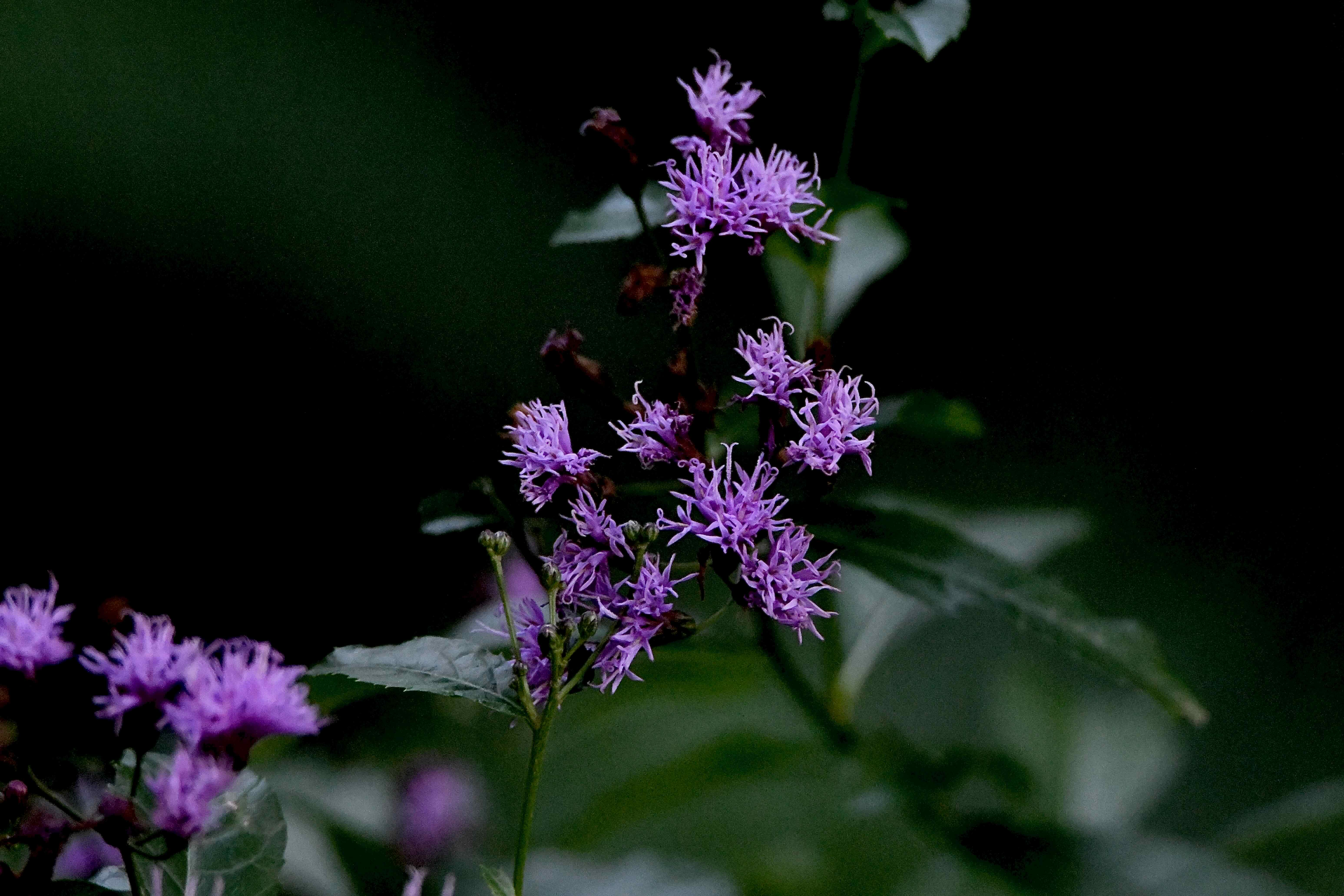
Florida ironweed, photographed at Long Pine Key, Everglades National Park, Homestead entrance, Miami-Dade County, in May 2025.
Florida ironweed, Vernonia blodgettii, is a pretty flower with a tough name. And it is a tough plant as well, growing in some pretty tough places.
It is, as the name implies, a Florida native, with a range that extends over the southern third of the Peninsula, plus the Keys. It's also found in Orange and Indian River counties, according to official distribution maps. Until relatively recently, Florida ironweed was considered endemic to Florida, meaning it was thought to grow only in the Sunshine State and nowhere else, but it has been found growing on Andros Island in the northern Bahamas.
The Vernonia genus is large, but exactly how large depends on who's doing the counting. Some sources say it has at least 350 accepted members, while others put the figure near 1,000. Regardless, the plants in the genus get the name ironweed from their tough stems and deep root system (a useful adaptation in Florida's pine flatwoods, where fire is a regular part of the natural cycle). Florida ironweed is one of two members of Vernonia native to South Florida, the other being giant ironweed. A third, little ironweed, is fairly common in South Florida, but it is not native.
Florida ironweed is among the smaller members of Vernonia, only standing between six and 12 inches tall. By contrast, giant ironweed, the other member of Vernonia native to Florida, ranges between three and 10 feet. Florida ironweed is an upright plant, usually with a single stem that branches out higher up the plant. It has long, narrow leaves, about two to four inches from tip to tip and about a half-inch wide. They are smooth on the top but slightly hairy on the underside. The leaves are larger and more numerous near the base of the plant, becoming progressively smaller and fewer higher up on the plant.
The flowers are relatively small but a bright purple or lavender and clustered in away that amplifies their effect. Some sources put blooming season as summer and fall; other sources say it blooms year-round, while others say geography factors into the equation. In parts north, Florida ironweed goes dormant in winter, while in parts south, it blooms year round.
Habitat includes pinelands, including the pine rocklands of Miami-Dade County and the Upper Keys, and marl rocklands. It grows in nutrient-poor soil. It prefers places that are seasonally wet or at least moist, but it can tolerate periods of drought once it is established. It is not salt tolerant.
It is cultivated, offered for sale in a few nurseries that specialize in Florida native plants. It is used in natural landscapes, wildflower gardens and butterfly gardens.
The scientific name of Florida ironweed is a mash-up of sorts that honors two prominent naturalists — William Vernon, a British botanist who explored North America in the 17th and 18th centuries, and Henry Loomis Blodgett, who was one of the first naturalists to collect plants of the Florida Keys for scientific study.
Florida ironweed is also known as Blodgett's ironweed. It is a member of Asteraceae, the sunflower and daisy family. Another common name: Blodgett's ironweed.
Everglades National Park, Homestead Entrance



